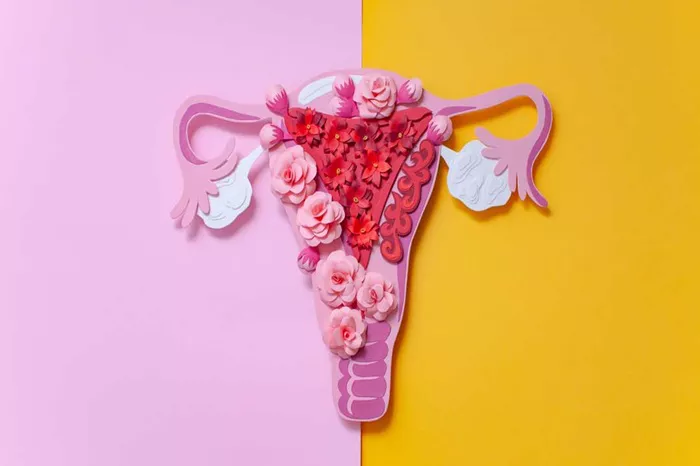Chen Liling, in her early thirties, struggled with persistent fatigue, breathlessness, and heart palpitations, attributing her symptoms to a need for more rest. However, her condition did not improve. A 2015 full-body check-up revealed severe anemia, likely caused by heavy menstrual bleeding. A gynecologist diagnosed her with uterine fibroids, including one large fibroid that caused excessive monthly bleeding and several smaller ones.
At 31, Chen underwent a myomectomy, a surgical procedure to remove the fibroids. Despite this, new fibroids appeared last year when she turned 40. This time, she had five times as many fibroids as before, forming a mass equivalent to a five-month-old fetus. These fibroids filled her entire uterus.
Unlike her previous experience, Chen’s periods were normal this time. However, she noticed a significant increase in the size and hardness of her lower abdomen. As a real estate agent, Chen, who is single, experienced frequent gastric pain, bloating, and increased urination due to the pressure of the fibroids on her stomach and bladder.
Understanding Uterine Fibroids
Uterine fibroids are non-cancerous growths made of smooth muscle and fibrous tissue originating from the uterus, explained Dr. Harvard Lin, an obstetrician and gynecologist at Asia Obstetrics & Gynecology Centre. According to Johns Hopkins Medicine, fibroids do not increase the risk of uterine cancer.
Fibroids commonly appear in the uterine wall, but they can also form outside the uterus, within the uterine wall, or rarely in the cervix. They vary in size from as small as a grain of rice to as large as a melon. Dr. Jessie Phoon of Mount Elizabeth Fertility Centre noted that one in three women have fibroids, though 40-60% of those with fibroids may not show symptoms.
Fibroids are often discovered incidentally during pelvic exams or ultrasounds. Symptoms may include:
Heavy or frequent menstruation
Anemia from heavy bleeding
Pelvic pain and pressure on the bladder or bowel
Abdominal swelling
Pain during sex
Lower back discomfort
The symptoms and severity of fibroids can vary based on their size, quantity, and location.
Hormones and Risk Factors
Dr. Lin noted that fibroids are most common in women aged 30 to 50. Hormonal factors likely contribute to their growth. Dr. Phoon explained that fibroids tend to develop under hormonal conditions. Hormonal fluctuations during the menstrual cycle, pregnancy, or with hormonal medications can affect fibroid size.
Fibroids typically shrink after menopause when estrogen and progesterone levels decrease but can still cause symptoms. Women who give birth to their first child at age 35 or older, or those who have never given birth, are at higher risk. Genetics also play a role—if a mother had fibroids, her daughters are three times more likely to develop them. Studies suggest African-American and East Asian women may have a higher risk due to genetic predispositions affecting estrogen metabolism. Obesity, associated with higher estrogen levels, also increases the risk.
Impact on Fertility
Uterine fibroids can affect fertility. Large fibroids near the fallopian tubes or cervix may obstruct sperm passage, while those within the uterine wall can alter uterine contractions and impede sperm movement or embryo implantation. Reduced blood flow and oxygen to the uterine lining can further hinder implantation. Removing fibroids can improve uterine health, increasing chances of successful pregnancy. However, not all women with fibroids face infertility, especially if the fibroids are located on the outer surface of the uterus.
During pregnancy, enlarged fibroids can increase the risk of complications, including the need for a cesarean section, labor difficulties, placental abruption, and pre-term delivery.
Treatment Options
Treatment for fibroids depends on size, location, symptom severity, age, and desire for future fertility. Small fibroids without significant symptoms may be monitored. Non-steroidal anti-inflammatory drugs (NSAIDs) like ibuprofen can alleviate pain. Hormonal medications, such as progestin-releasing intrauterine devices (IUDs), may help regulate bleeding and reduce fibroid size.
Non-invasive options include MRI-guided high-intensity focused ultrasound and uterine artery embolization (UAE). MRI-guided ultrasound uses focused energy to destroy fibroids, while UAE cuts off blood flow to shrink them. Surgical options include morcellation, where fibroids are cut into pieces and removed, and myomectomy, which removes fibroids while preserving the uterus. In severe cases, a hysterectomy, the removal of the uterus and possibly the ovaries, may be necessary.
Preventing Recurrence
Uterine fibroids cannot be prevented from forming or recurring. Regular pelvic exams and a healthy diet rich in fruits, vegetables, and fiber are recommended. Women should work with their doctors to determine the best treatment plan based on their individual situation.


